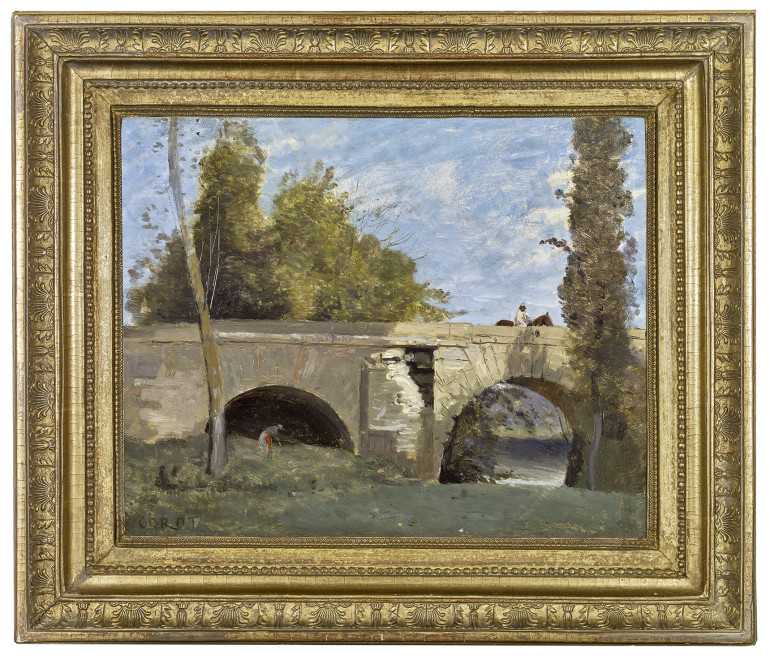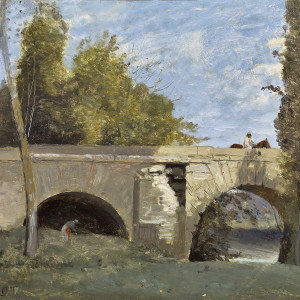The village of Mantes continued to inspire later artists, such as Alfred Sisley and Paul Signac, who also could trace their lineage as landscape painters back to Corot.
Provenance
Louis Onésime Hermeline, Limay, France (gifted directly from the artist and sold, his posthumous sale, July 27, 1896)
M. Chamouillet (acquired at the above sale)
Arnold & Tripp, Paris (acquired in August 1896)
James Staats Forbes, London (by 1904)
Mary Frances Allen, Connecticut (and sold, her estate, Sotheby's, New York, May 26, 1994, lot 14, illustrated)
W.M. Brady & Co., New York
Private Collection, Florida
Literature
Alfred Robaut, L'oeuvre de Corot, catalogue raisonné et illustré, Paris, 1965, vol. III, p. 102, no. 1531, illustrated p. 103Rodolphe Walter, Corot à Mantes, Paris, 1997, p. 160-1, illustrated p. 160 and pl. XI
Catalogue note
Corot’s topographical views of Mantes, a French town situated thirty miles west of Paris, are not as well-known as his early paintings of Italy or his Ville d’Avray landscapes, yet the frequency in which they appear throughout his career, indicate that this was an important subject and source of inspiration for Corot. He focused primarily on two landmarks: the early Gothic church of Notre-Dame and the 18th century stone bridge over the Seine. His earliest recorded paintings of these two monuments date to the mid-1840s, when he was a frequent guest of the local Mantes magistrate, François-Parfait Robert. Corot returned to Mantes on several occasions in the late 1860s and continued to depict views of the church and the bridge from different angles.
Our painting dates to one of Corot’s later, circa 1865-70, visits to Mantes, where he once again was a guest of François-Parfait Robert. The brushwork is quick and spontaneous, dry and creamy at the same time. Has he set up his easel on the banks of the Seine, alongside the bridge? With its natural freshness and lack of finite polish, the painting has all of the characteristics of plein air painting. The village of Mantes continued to inspire later artists, such as Alfred Sisley and Paul Signac, who also could trace their lineage as landscape painters back to Corot.
Mantes and especially its trademark bridge featured prominently in 20th century history – it was the location of the first allied bridgehead across the Seine on August 19, 1944, which eventually led to the liberation of Paris.
This painting has been authenticated by Martin Dieterle and Claire Lebeau.




